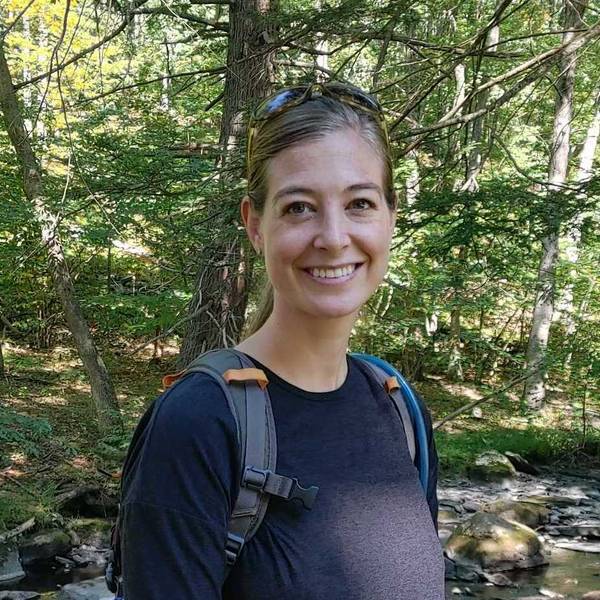Have pronghorn reclaimed Death Valley?
There had been rumors. A few excited whispers around campfires or in the dusty back rooms of park buildings. Then in 2017, a pixelated image on the citizen science website iNaturalist appeared, prompting conservationists to ask: Has the pronghorn antelope, that emblem of the American West, returned to Death Valley National Park?
This April, the rumors turned into a roar, with multiple sightings by park staff, including one by Mike Reynolds, a 22-year veteran of the National Park Service and the current Death Valley superintendent. Shortly thereafter, park staff took a photograph that put an end to all the speculation. Unlike earlier images of a lone male passing through the northern, higher elevation edge of the park, this photo captured a band of at least six animals with several females among them, smack dab in the heart of the largest national park in the contiguous United States.
Death Valley National Park is a landscape of superlatives: hottest, lowest, driest. It’s also startingly diverse, running the gamut from desolately otherworldly to remarkably vibrant. Sprawling north to south along the California-Nevada border, it serves as the vast, protected core of the Mojave Desert. Mojave’s 20 million acres of sere vistas, salt-crusted basins and imposing crags stretch from California’s southern end into Arizona, Nevada and Utah. This arid landscape, fodder for sci-fi and dystopian novelists alike, is well within the pronghorn’s historic range.
More pronghorn near Joshua Tree?
In fact, the pronghorn — the last holdout on an otherwise extinct family tree — has been present across much of the West, from Canada to Mexico, for millennia. But in the Mojave, it has been largely absent since the early to mid 1900s. The exact cause of the pronghorn’s disappearance in the area was likely a combination of factors: increased competition with livestock, loss of habitat and hunting.
More puzzling is the reason for the pronghorn’s celebrated return to Death Valley. Some suggest above-average spring wildflower blooms have enticed the opportunistic browser. Others wonder if development pressures on the species’ existing range forced it to rediscover this area in its search for suitable habitat.
Whatever the reason, Chris Clarke, NPCA’s California desert program manager, sees the pronghorn’s return as evidence that decades of conservation work are paying off.
“We have something here that is not duplicated anywhere else in the lower 48: many, many square miles of unaltered habitat, much of it protected,” Clarke said. It is this wildness that Clarke believes has contributed to the pronghorn’s return. This fleet-footed ungulate, with its roan-colored sides and distinctive white rump, is an indicator species, he said, its presence signifying that a landscape is suitably large and suitably free of human disturbance.
Today, Death Valley National Park is part of a miraculously intact desert ecosystem. Despite a checkerboard pattern of land ownership and peripheral expansion from Los Angeles and Las Vegas to the west and east, public lands within the Mojave Desert are plentiful. Two of the desert’s more well-known national park units (Death Valley National Park and Mojave National Preserve) comprise a quarter of the desert’s acreage, with portions of Joshua Tree National Park and lands managed by Bureau of Land Management and U.S. Forest Service accounting for additional pockets of largely undeveloped habitat. What’s notable is that the vast majority of these lands were originally protected or substantially enlarged via the California Desert Protection Act of 1994, nearly 50 years after pronghorn were last known to inhabit the area.
Advancing the conservation of this dynamic landscape has been a driving force behind NPCA’s California desert work. In recent years, NPCA and our partners and allies have worked to protect nearly 2 million more acres of land. We helped ensure the 2016 designation of three new desert national monuments, which buffer existing parklands and contribute to a growing tapestry of intact habitat. We’ve also fought developments near the parks that would further strain the area’s aquifers and unduly impact key wildlife, such as the threatened desert tortoise.
Seeing the pronghorn, which Clarke calls “quintessentially North American,” make its way back into the area is a sweet reward for years of effort. For him, the pronghorn is akin to the roadrunner and jackrabbit, providing those who see it with a distinct and immediate sense of place.
Stay On Top of News
Our email newsletter shares the latest on parks.
Clarke admitted to “grandiose, wishful thinking” when he envisioned a future where the pronghorn’s range extends beyond Death Valley. If the animals travel south past the popular Furnace Creek and go another 30 miles beyond the southern tip of the park (a distance pronghorn routinely migrate in Wyoming), it would put them at the doorstep of Mojave National Preserve, whose scrubby landscape makes ideal habitat. And from there, he mused, what’s to stop them from trekking further south across the mostly unbroken swath of public lands, all the way down to Joshua Tree National Park?
In the near term, with the temperatures in the park inching toward summer highs (which average 115°, but can top 130°), Clarke would be shocked if this intrepid Death Valley band doesn’t strike out for higher elevations, perhaps leaving the park altogether. Unsurprisingly, this is one prediction he’d love to get wrong.
“If they’re seen again in the fall,” he said, “that would be amazing news.”
About the author
-
 Katherine DeGroff Associate and Online Editor
Katherine DeGroff Associate and Online EditorKatherine is the associate editor of National Parks magazine. Before joining NPCA, Katherine monitored easements at land trusts in Virginia and New Mexico, encouraged bear-aware behavior at Grand Teton National Park, and served as a naturalist for a small environmental education organization in the heart of the Colorado Rockies.
-
General
-
- NPCA Region:
- Pacific
-
Issues


